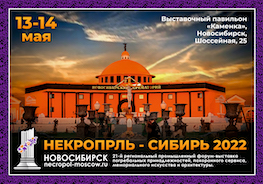
Dan Lavin doesn’t know when, or under what circumstances, he will die. But he knows what will happen next.
His body will be undressed and washed, and cooled to slow decomposition, no chemical preservatives or embalming. On the day of his funeral, he will be wrapped in a plain shroud of natural fibers and placed in the dirt, between three holly trees on a wooded burial preserve in rural New Jersey. There will be no tombstone or prefabricated marker. There will be no concrete vault to bury, so the hole will have to be dug only a few feet below the surface—deep enough that animals won’t disturb the grave, but shallow enough to allow aerobic bacteria to join those that will have already begun aiding the enzymes inside the body to digest his dead and still-dying cells.
Within a few weeks, maggots and worms will join the feast; within a couple of months, all that will be left is a dry skeleton. And once the years have broken down the bones, Dan Lavin’s earthly presence will have been completely absorbed by nature, no trace left behind—precisely as he wishes.
“Everything on this planet is made up of atoms,” says Lavin. “In theory, we’re all made of stardust.”
For 150 years, bereaved Americans have been embalming their dead, pumping them with formaldehyde, sealing them in metal caskets, and entombing them in vaults buried deep in the ground, enriching what’s now a $16 billion “death care” industry. But in the past decade, millions of baby boomers like Lavin have started to look for simpler, more eco-friendly funeral arrangements. A generation that embraced recycling, organic produce, and natural childbirth wants to die naturally, too—wrapped in shrouds, or woven caskets made from seaweed, or in a flesh-eating mushroom suit. A 2015 study by the Funeral and Memorial Information Council found that 64 percent of adults aged 40 and up said they would consider what’s called green burial, up from 43 percent just five years earlier.

The reasons for this shift vary. Kate Kalanick, executive director of the Green Burial Council (GBC), a third-party nonprofit that certifies green burial practitioners and products, says a big factor is cost. Eschewing the materials involved in prefabricated coffins, vaults, and tombstones can save money on a process that’s become increasingly expensive—the average traditional funeral costs from $7,000 to $10,000. Other green burials stem from more personal choices. Kalanick says she’s heard of farmers who want to rejoin the land they and their families have worked, biologists who geek out on the prospect of returning to the ecosystem, and some people who just want to be buried in a pretty, uncrowded place.
Of course, a major driving factor is increasing concern about the environment. Cemeteries essentially become landfills: Each year we dump 800,000 gallons of formaldehyde, a toxin, into the soil; not to mention 115 million tons of casket steel, nondegradable casket hardwood equivalent to 4 million acres of forest, and 2.3 billion tons of concrete, waste that will take centuries to biodegrade and valuable resources that could be used elsewhere. Cremation, previously believed to be the more environmentally friendly means of disposition, isn’t so green after factoring in the cost of fossil fuels expended to burn bodies and the toxic chemicals, like carbon monoxide and mercury, that it releases into the atmosphere. “A lot of people talk about their carbon footprint on the environment,” says Kalanick. “But many don't understand how heavy that last footprint can be.”
Lavin, a 53-year-old founder of a business that makes all-natural pet foods, says he understands, and that’s partially why he’s decided to take literally the phrase “ashes to ashes, dust to dust.” “[Traditional funerals are] all about preserving the body when our body is designed to decompose,” he says. “Not only are you polluting, but you’re trapping all these atoms. … It’s like you’re breaking the cycle of life.”

There’s nothing new about natural burial, far from it. Returning a shrouded body directly to the earth is what humans have been doing since time immemorial. The practice is documented in the Bible, the Torah, and the Koran—the latter two requiring the deceased to be left in contact with the earth. It wasn’t until the U.S. Civil War, when field surgeons began embalming dead soldiers for the long train ride to their hometown cemeteries that American consumers became obsessed with preserving their loved ones’ worldly vessels. As embalming practices improved, morticians could restore and maintain the body’s appearance, even after a disfiguring accident, for public viewing. A population that was spreading out across the country could now delay funerals to allow for the arrival of relatives from long distances. Corpses, themselves, could be shipped anywhere in the world.
If you’re going to go to the trouble of maintaining the body before the funeral, it would seem logical to fret over the outside forces, the microbes and insects, that seek to attack it after burial. The idea of protecting a loved one from water and worms inside a box-in-a-box of concrete and steel was comforting. And, of course, a "death care industry" that had already taken body preparation out of the home and into its own parlors was only too happy to oblige by selling ornate goods and services, wakes and viewings, out of its growing businesses to a culture increasingly preoccupied with packaging.
The price tags that ensued are part of the reason why in recent decades, more people, now more than 40 percent, have turned to cremation, which is cheaper (averaging about $1,000) because families forgo the body preparation and the elaborate casket. Also, with direct cremation immediately following death, consumers often skip the on-site wakes, visitations, and funeral services by taking the easily portable remains elsewhere to be stored or scattered.
By the early 1990s, the total outsourcing of death services had made traditional funerals so impersonal and expensive that a bit of a backlash flared up in the U.K. In 1993, Ken West, the bereavement director for the city of Carlisle, in England’s northwest, was looking for an affordable way to expand the city’s Victorian-era churchyard amid an economic recession. His solution was to open a woodland extension, calling for “biodegradable coffins or shrouds” and graves marked by oak saplings instead of monuments. West had already championed the practice of letting old graves return to a natural covering of wildflowers, rather than subjecting them to a regimen of pesticides and mowing, and this new proposal grew out of that same urge to reconcile with nature.
The woodland burial ground was a local success, and the idea was picked up by the Natural Death Centre, an organization founded by three psychotherapists just a few years before in London. The center was concerned about what would today be called “end of life” issues: It sought to move dying out of the hospitals, where more than 90 percent of the population was expiring, and back into the home. When its founders heard of West’s woodland cemeteries, they expanded their advocacy to include post-death practices, as well. In 1994 the center launched the Association of Natural Burial Grounds to ensure that “every locality should have its own natural burial ground.” There are now about 250 such sites in the U.K.

Green burials have been slower to penetrate the U.S. market, however. The Green Burial Council, founded in 2005, certifies 225 funeral homes—out of more than 15,000. But the number is growing, and establishments don’t have to be GBC-approved to offer green and eco-friendly options. The shift is being driven by more than just consumer demand. More and more funeral directors are seeing eco-friendly burial as a way to recoup income lost by the increase in cremations. “Funeral homes are selling themselves and their services,” says Edward Bixby, GBC president and owner of Steelmantown Green Burial Preserve in New Jersey. “With direct cremation, what are they going to make on that?”
Green burials, on the other hand, can still use funeral homes. The body needs to be stored, refrigerated, and even embalmed with an all-natural, vanilla-bean-based fluid, if it takes Aunt Susan a few more days to fly in for services. There can still be a casket. And the funeral director can still provide disposition at a traditional cemetery, family plot, or a true natural burial perhaps in a nature preserve. The average green burial, according to GBC, is closer to $5,000, compared with the traditional service that can run up to and beyond $10,000. But handwoven willow or seagrass caskets imported from Asia or a bigger service can run up the green burial tab. And as with the rise in sales of organic produce, artisanal goods, and electric cars, price isn’t always an object for the environmentally concerned.
Money isn’t the only motivation for funeral homes turning to eco-friendly burial, either. Robert Prout, a third-generation funeral director who serves on the Green Committee of the National Funeral Directors Association, says he sees another benefit to green funerals as opposed to direct cremation: closure for the family.
“Since we first looked into green burials back in 2005, I’ve found that a lot of families that had chosen cremation look at natural burials more favorably,” says Prout, who’s been a licensed director in New Jersey for almost 40 years. “The human spirit needs some type of ritual or ceremony. And natural burial allows you to participate and be environmentally conscious.”

When Lavin first started thinking about how he wanted to be buried, he was attending a friend’s funeral. The line to view the body was long and solemn, snaking through a forest of bouquets. Lavin approached the hulking metal casket where his friend Chuck’s corpse lay embalmed, and looked in. At that moment, Lavin’s partner, Dan Palomino, whispered exactly what Lavin had been thinking.
“This is weird,” said Palomino. “I think Chuck would be laughing.”
Lavin felt Palomino was right. Chuck had been a prankster, the cutup whose jokes and wry observations never failed to provoke laughter, even at the staidest affairs. He was thoroughly unconventional. “This funeral was very traditional,” Lavin says, looking back. “It didn’t seem to fit who he was in life.”
The topic of death had been lurking in Lavin’s mind. For the previous four years, Palomino, his partner of five years, had been staving off colon cancer. And that night, after they’d returned from Chuck’s wake to their home in Wilmington, Del., Lavin started Googling information about funerals, for himself as much as anyone.
Lavin remembered watching a television show in which a character was buried in a simple shroud. That had always resonated with him, so he started his search there. Lavin isn’t what he’d call a tree-hugger, but he grew up on a dairy farm in northeastern Pennsylvania, where he learned to appreciate humanity’s place in the chain of life. He’s never believed in synthetic fertilizers or pesticides. Reading about natural vs. traditional burial put everything in perspective.
Natural burial, Lavin read, was simple, no-fuss, and environmentally responsible. “Not this made-up fluff that funerals are today,” he says.
Lavin looked over at Palomino sitting in his recliner and worked up the courage to broach the topic. “We had approached [cancer] like we were truly going to beat this whole ordeal,” he says. “We never talked about death. You never know who’s going to go first.” Now they started talking. “This funeral opened up a door for me. What would we do? How would we handle this?”
“Everything on this planet is made up of atoms. In theory, we’re all made of stardust.”Today, a green burial can take many forms. Now that mortals are thinking outside the old pine box, other ways in which to keep our molecules spinning in the life cycle are popping up.
In Florida, a company called Eternal Reefs offers to take cremated remains, incorporate them into a cement artificial-reef formation, and place it in a permitted ocean-floor plot of one’s choice, where the deceased can become part of a sea-life habitat. For $1,500, from online company Coeio, consumers can buy a “mushroom suit” or shroud lined with flesh-eating fungi that will hasten the body’s return to nature. Earlier this year, an Italian art project called Capsula Mundi made waves with biodegradable egg-shaped burial pods, in which ashes or even a fetal-crouched body could be placed, and then planted beneath a tree that would stand as a memorial and even negate some of the carbon dioxide that person spewed into the atmosphere while alive.
“These creative bursts of what you can do are an indicator of the latent interest in this concept,” says Cynthia Beal, founder and owner of the Natural Burial Co. in Eugene, Ore. “We’ve all been forced into the black Model T, and all of a sudden the idea of the red car has been raised.”
Beal, meanwhile, is content with the sarcophagus-shaped eco-pod made from recycled newspaper that sits in the front window of her shop. She says she’ll be buried in one of the two cemeteries she owns in semirural Oregon. It was back in 2002, when Beal, an entrepreneur, was running an organic food company that she first pegged natural burials as the next big thing. After launching the Natural Burial Co. two years later, she found that the bulk of her business wasn’t coming from the coastal hippie culture. “My main contact when I first opened up was from the South and the Midwest Bible Belt,” says Beal. “The Birkenstock crowd has already made up their minds: They want cremation.”
Beal believes the uptick in interest among consumers and typically conservative funeral directors is just the beginning. The logical next step is to get cemeteries on board, which won’t be easy. Of the 120,000 cemeteries in the U.S., only about 80 allow burial without the concrete vault. Beal says the reason is, in part, to cover costs and also to reduce labor needed to backfill and reseed the holes as coffin and body break down and the soil sinks.
Meanwhile, Beal’s cemeteries offer special compost to facilitate decomposition and she recently sold her first limited-tenure agreements—leasing the gravesite for a number of years until the body is gone and the ground can be reused. The practice—common in Europe, where land is scarce—helps ensure sustainability for the ground, particularly in urban cemeteries that essentially become historic landfills in the middle of the city.
Again, consumer demand might push more cemeteries to follow Beal’s lead. Funeral director Prout says that as society has become more mobile, there’s less of a connection to the old family plot. “Many people don’t know where their grandparents are buried,” he says. “Once you get across [to consumers] that no one’s going to the cemetery [to visit], and that you could be buried in a field or beneath a tree, I’d be willing to bet you that people would prefer that to a mahogany casket and a concrete burial vault.”

Though they’d started the conversation about death, Lavin and Palomino never got around to making firm plans. Ten months after Chuck’s funeral, the cancer that had metastasized to Palomino’s lungs and heart finally killed him. He and Lavin hadn’t yet visited the natural burial preserve they’d wanted to look at in New Jersey. But Lavin felt sure this is what his partner would’ve wanted.
Palomino’s parents were more traditional, so out of respect for them, Lavin chose a wicker casket for their son, over the simple shroud Palomino had wanted for himself. There were more than 100 people at the service, which was informal—just a loose celebration of life. Lavin dressed his partner in a sweatshirt and sweatpants. It was an open casket. The body had been refrigerated, no embalming. There was no makeup on his face; his hair was parted as if he’d done it himself.
“He looked like who he was,” says Lavin.
Lavin chose a site along the preserve’s winding wooded trail: the patch between three holly trees. He even helped the grounds crew clear stones and dig the grave by hand. It made him feel connected and close to the love he’d lost.
“He loved animals. He loved nature. He loved history,” says Lavin. “He’s where he was meant to be.”
Now, Lavin can visit the shaded spot where he, too, will one day rejoin the earth.









